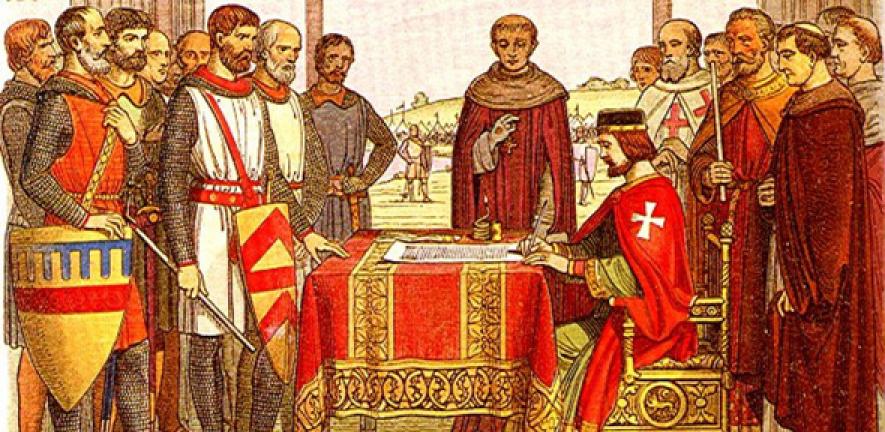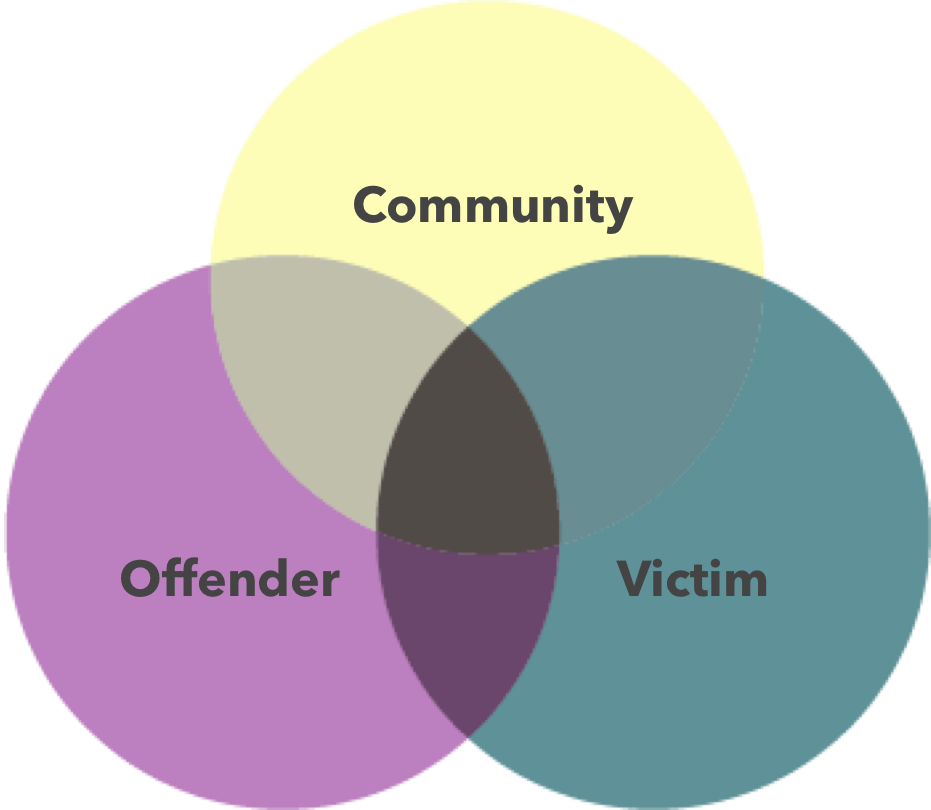This system of law uses the inquisitorial method of adjudication, today seen in Canada’s civil court system
French Civil Code
One of the oldest known set of codified laws
Code of Hammurabi
John and Jane are seeking a divorce and must now determine custody arrangements
Family Law
This philosophy holds morality as it’s most important source of authority
Natural Law
This aim of punishment considers it the role of the justice system to help offenders correct problematic behaviours and return functional members of society
Rehabilitation
Word meaning to change or edit a proposed bill
Amend
Greek, meaning "people power"
Democracy
This legal tradition is the source of law that shaped Canada’s criminal law system
British Common Law
This is a depiction of King John I signing this document, latin for "Great Charter"
Magna Carta
Brent and Dave, a gay couple, feel that a realtor is discriminating them based on their sexuality
Constitutional Law
Positive Law believes authority comes from this
The Sovereign
This aim of punishment focuses on compensation to make up for the wrong done
Restitution
Word meaning "within the power of" or "the responsibility of"
Jurisdiction
This cartoon is often used to demonstrate the contrast between these two concepts
Equality and Equity
Bill C-7, an act concerning medical assistance in dying, is an example of this secondary source of law
Statute Law
This legal tradition was the first to use juries, with as many as 501 jurors serving at a time
A teacher disregards recalls of a brand of chips and finishes the bag, despite reports of broken glass being found in some bags, forfeiting any legal action under this category

Tort Law
Naturalists live by this quote
"An unjust law is no law at all"
The death penalty is an example of this vengeance-based aim of punishment
Retribution
The process when a bill has successfully reached the Crown before being signed into law
Royal Assent
Voter turnout provides an interesting case study for analysis under this pair of concepts
Rights and Duties
This diagram visualizes the focus main focus of this legal tradition

Aboriginal Law
This legal tradition was the first to introduce advocacy - the practice of legal experts acting as representatives for defendants
Roman Law
The prosecution of an alleged member of an organized crime family is compromised as its determined key evidence was gathered illegally
Procedural Law
Positivists use this "thesis" to explain the exclusivity of morality and the law
The Separation Thesis
The Indigenous values of community are present in this type of justice, also demonstrated in the diagram shown here
Restorative Justice
The House of Commons and The Senate
This pair of concepts can be used to analyze the many ways influence is gained
Power and Authority
The religious influence on Canada’s laws could be seen in this law, which was struck down
The Lord's Day Act
This Byzantine Emperor outlawed slavery and codified Civil Codes for the Roman Empire
Justinian
Roommates Jack and Leo are hanging out when they are surprised by their landlord unlocking the door and entering the apartment; their lease agreement states they must receive 24 hour notice for a landlord visit
Contract Law
Evil, illness and natural disasters are all examples of this logical argument against Natural Law
The Naturalistic Fallacy
In medieval times, the way guilt was determined was a punishment in itself, like with this method of adjudication
Trial by Ordeal
Ontario's legislative assembly gathers to debate laws at the Toronto location pictured here
Queen's Park
The Anishiinabek Police Service has detachments serving communities across Ontario, demonstrating the balance between these two concepts and the relationship between Ontario's indigenous communities and the Ontario government
Sovereignty and Jurisdiction